Swimming photography is a captivating blend of athleticism and artistry. It’s a dynamic challenge that pushes your creativity and technical skills as a photographer.
Our article delves into the nuances of capturing the fluid movements and precise moments of aquatic grace. We offer you valuable insights and practical tips to elevate your swimming photography to new heights.

Are you wondering how to take the best photos of swimmers? Swimmers can make for some beautiful and unique shots, but they’re not easily captured. Here are a few tips to help you get started with swimming photography.
It’s possible to take photos of swimmers with any camera or mobile phone. But if you want to take professional-looking photos, it’s best to invest in a camera with a high burst rate. This will help you to effectively capture the fast-paced action of swimming.
A rapid-fire burst rate of at least 12 photos per second ensures even the swiftest strokes are frozen in time with clarity and precision. A camera with a good burst will help you preserve the intensity of each lap or race.
Most beginner mirrorless cameras have decent burst rates. But the higher the burst rate, the more likely you’ll be able to capture the peak of the action.
Professional sports photographers also prefer to use cameras with fast autofocus. The faster the autofocus, the less likely you will miss the action. Read our article about the best cameras for sports photography.
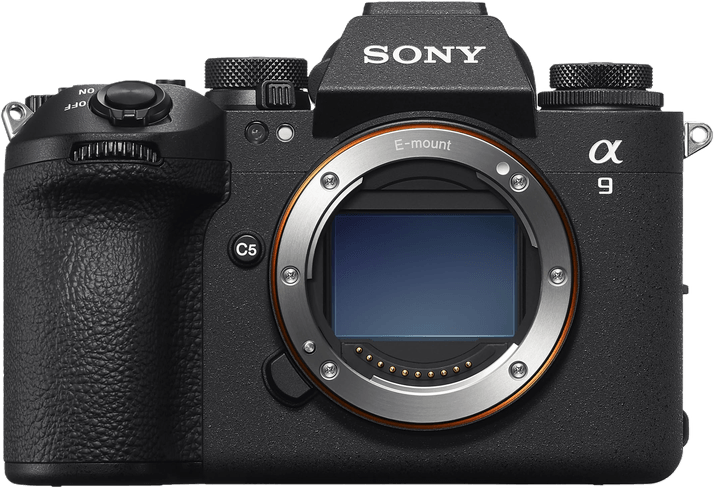
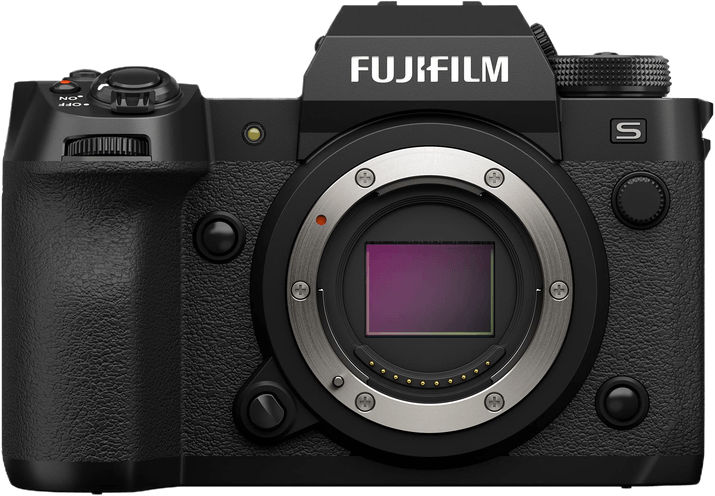
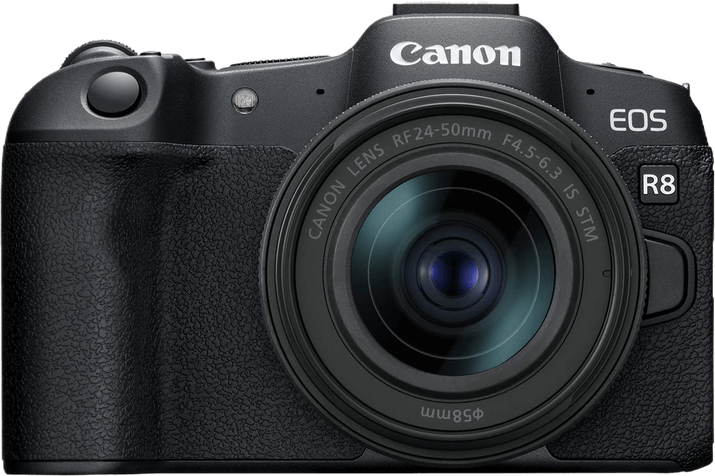
A telephoto lens is an indispensable tool for swimming photography. Since you’ll be far from the action, a long telephoto is necessary to fill the frame. It allows you to capture close-ups of swimmers from a distance.
Opt for a versatile lens, like a 100-400mm range. This offers flexibility for capturing both tight portraits and expansive environmental shots. Consider longer focal lengths like 600mm or 800mm for larger pools, capturing starts, or to get more details.
You can read our recommendations for the best telephoto and super-telephoto lenses. Or, check out our article on the best sports photography lenses.
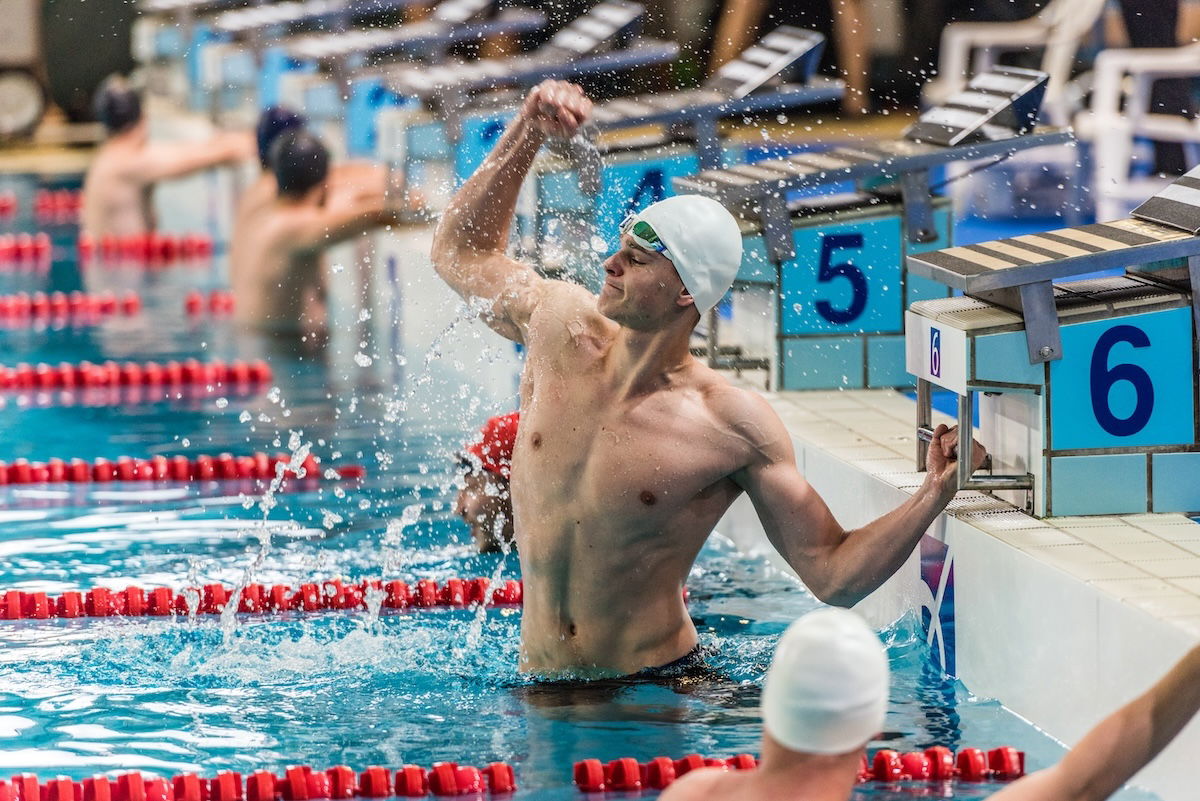
Set your camera to continuous autofocus (AF) mode. This is AI Servo for Canon cameras and AF-C Focus for Nikon or Sony. It’s essential for sharp focus while tracking swimmers in motion. Plus, it’s almost always the best focus mode for sports photography.
The AF mode continuously adjusts focus as swimmers move. It ensures your subject remains clear amidst the dynamic swimming action.
This is also the best option if you want to take photos of fast-moving objects in general. Depending on the composition, you should pick a focus point for the best results. The swimmer’s face is often at the top of the frame, which helps you pick a focal point accordingly.
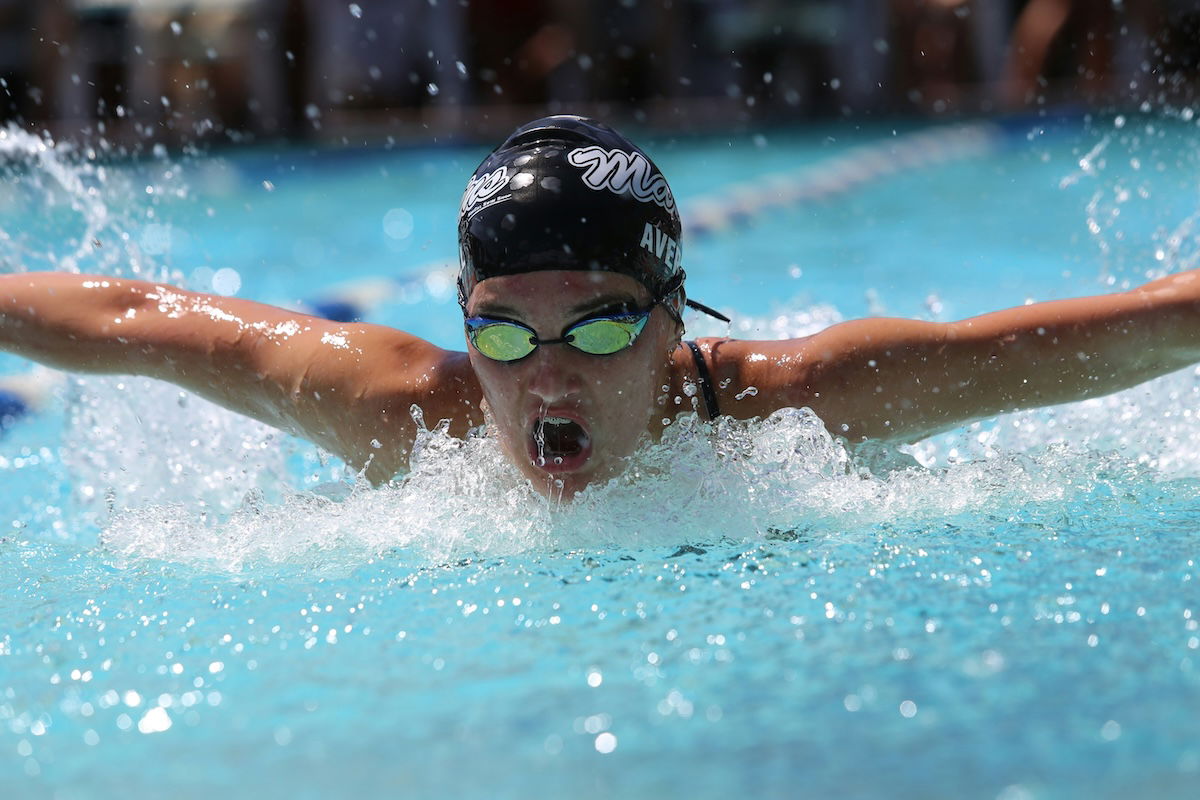
Understand the nuances of each swimming event. This research will help you to anticipate critical moments and compose compelling shots. Like any other type of sports photography niche, the better you know the subject, the better your photos are.
Different strokes and race types demand varied approaches. They require photographers to adapt their shooting techniques accordingly. It may be powerful freestyle strokes or the rhythmic elegance of breaststroke.
Familiarity with the sport will help you take better photos of swimmers. Shooting a freestyle event is more challenging than breaststroke. A freestyle swimmer won’t show their face that often. Their head only pops up when they need to breathe.
Every event requires a different approach. If you want to take great swimming pictures, you must know how they differ.
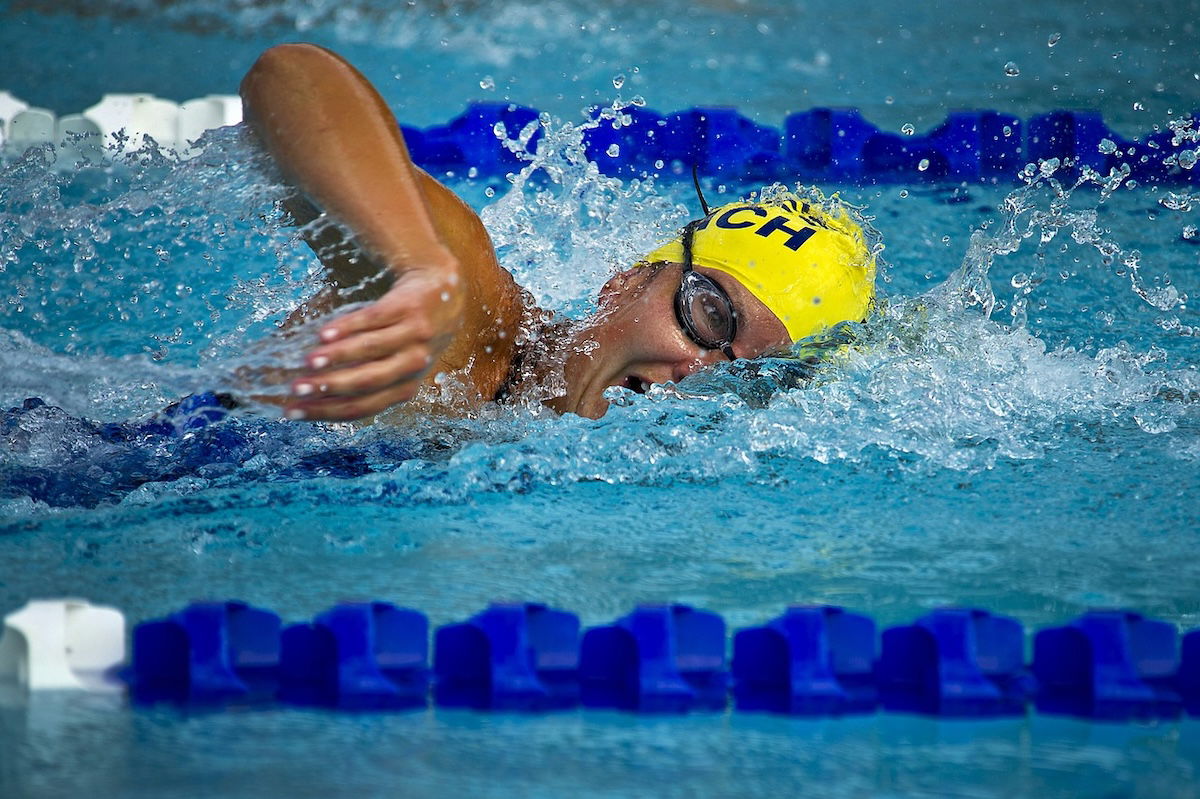
Don’t just stick by the side of the swimming pool. Experimenting with diverse vantage points adds depth and variety to swimming photography. Move around the pool deck to capture shots from different angles, offering unique perspectives on the action.
Position yourself strategically to capture dramatic race starts. Or, ascend to the stands for sweeping panoramic views of the pool. Try to mix it up by finding new camera angles.
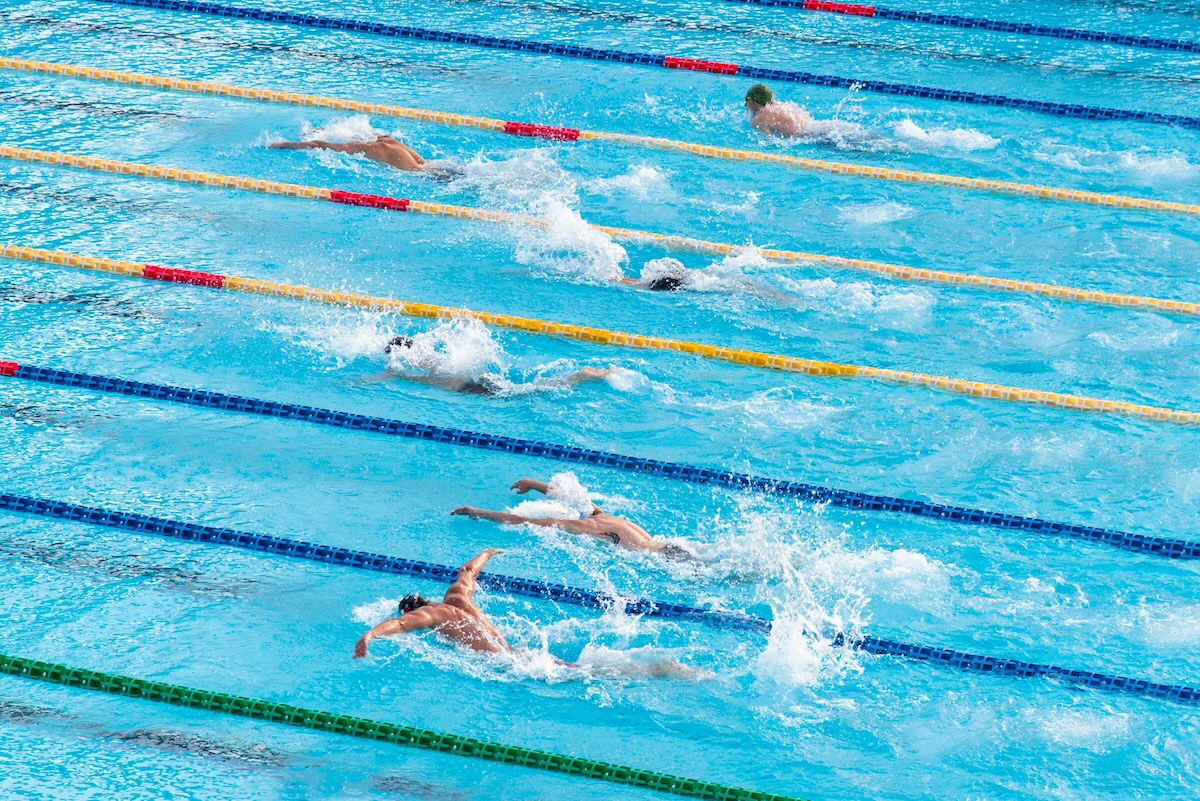
Look to capture images beyond swimmers in motion. Pay attention to subtle details and reflections in the aquatic environment.
Explore the interplay of light and water. Try to capture mesmerizing reflections or shimmering surfaces. And experiment with contrasting colors and textures to add visual interest and depth to your swimming photos.
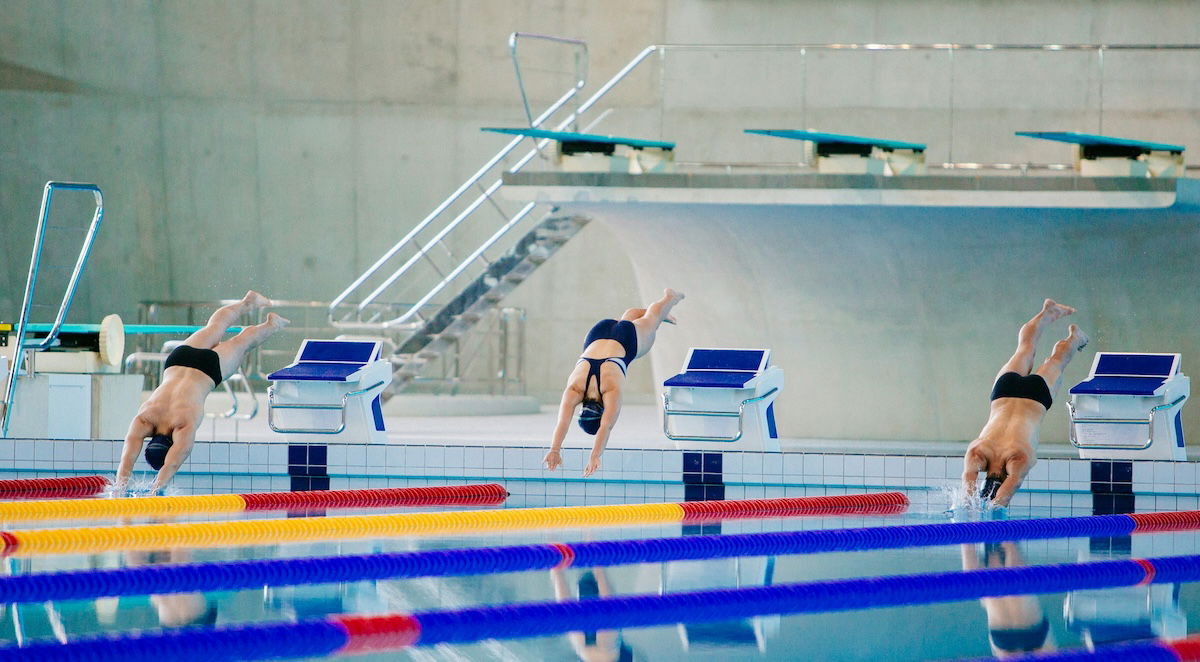
Delving into underwater photography unlocks a realm of creativity and innovation. It offers a unique perspective on swimming events. And you can even explore diving and synchronized swimming competitions.
You can capture fascinating images beneath the surface with the right equipment and permissions. Photographers can showcase the fluid movements and dynamics of aquatic sports in a captivating manner.
Mastering underwater photography requires a new skill set. But the results are often breathtaking and set your work apart.
After you’ve mastered taking photos of swimmers above the surface, why not take it a step further? If you have the right equipment, ask the organizers or swimmer if they’ll let you take photos underwater.
Read our recommendations for the best underwater cameras and housing.
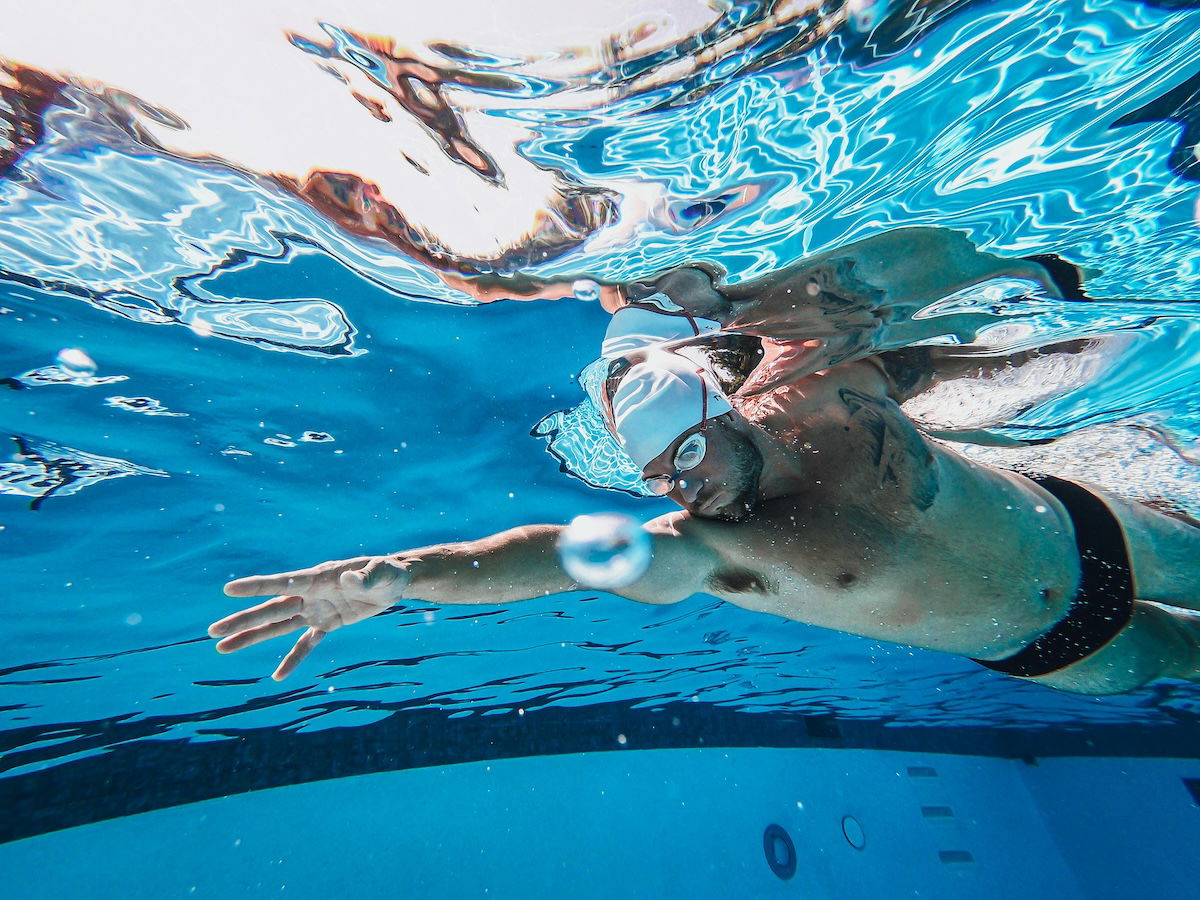
Swimming photography combines technical skill, timing, and artistic vision. It offers photographers a thrilling canvas to capture moments of athletic prowess.
Master camera settings, understand swimming events, and embrace creative composition. You can elevate your swimming photography to new heights. Dive into this niche confidently, and let your images tell a compelling story of aquatic athleticism.
Try out our Photography Unlocked eBook to master your camera settings. Or, check out our Wow Factor Photography course for high-speed shooting and water photography tips.

